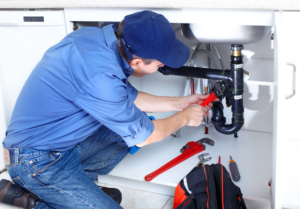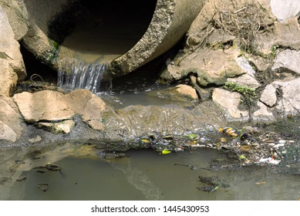Pasadena Plumbing carries water and waste materials throughout a facility. It includes pipes and fixtures like toilets, sinks, showers, and water heaters.

Regulations govern this system’s design, installation, and maintenance to protect public health and safety. These regulations are typically detailed in building codes. These codes include standards for pipe sizing, water supply, drainage, venting, and fixture installation.
Plumbing involves the pipes, fixtures and other apparatus required for water supply and waste removal in a home or commercial building. It’s an essential trade, and one that’s been around for thousands of years. In fact, some of the first plumbing systems are dated back to 4000 B.C., and were found in palaces along the Indus River valley. Later, the Egyptians invented copper water pipes and even put toilets inside their pyramids.
During the Middle Ages, little improvement was made to plumbing, and people reverted to using cesspools or open ditches for sewer systems. But by the 19th century, major advancements were made in plumbing technology. This included indoor plumbing, flush toilets and sewer systems, all of which significantly improved public health and sanitation.
A key component of modern plumbing is the water filtration system, which helps to ensure clean, safe drinking water. However, plumbing also includes the installation of appliances and other equipment like bathtubs, showers, sinks, and dishwashers. The plumber must be familiar with a variety of tools and techniques to properly install and repair these items.
In the earliest days of plumbing, piping was often made from wood. When the English migrated, they brought this practice with them and it soon became more common than metal piping. The early plumbers were very concerned with ensuring the safety of potable water. That’s why their motto was “Prevention Rather Than Cure.” Today, plumbers use many of the same practices they developed in the early days to protect the quality of our nation’s water supply. This is done through air gaps, backflow preventers, separation of potable water sources from waste streams, construction of water and sewage treatment plants, and more.
Metal pipes were used in plumbing up until WWII, when a shortage of metals forced them to be replaced with plastic. Today, plumbers primarily use PVC (polyvinyl chloride) piping for both residential and commercial plumbing systems. However, older homes still have their original piping in place, and some plumbers specialize in restoring these old pipes for historic preservation purposes.
Materials
Plumbing pipes are made of many materials to suit the different needs of a home or business. Each pipe material has its pros and cons, which impact durability, longevity and compatibility with varying temperatures and water pressures. When selecting the appropriate piping for your home, it is important to consider factors like budget, durability requirements and local building codes.
The most common piping materials in modern plumbing are copper, PVC and PEX. These plastics are lightweight, affordable and versatile. They are also resistant to corrosion, which is beneficial for plumbing systems that carry potable drinking water. They are typically color coded to help plumbers identify hot and cold water lines.
Soft metals are also commonly used in plumbing. Brass is an example of a common soft metal that can be found in plumbing, along with galvanized iron and stainless steel. Unlike some hard metals, brass is relatively flexible and can create air-tight seals. It also has higher corrosion resistance and can withstand varying water temperatures.
Hard metals are usually used in drainage lines, as well as main water line connections to the water heater. They are durable and can withstand high water pressures. However, some types of hard metals are prone to rusting and may not be ideal for plumbing applications that require flexibility or tight spaces.
Galvanized steel was a popular choice in the past but is less common today. This type of metal is strong and durable but can rust over time, which can lead to leaks in the plumbing system. Alternatively, stainless steel is an excellent choice for plumbing pipes because it is both strong and resistant to corrosion.
Depending on your specific needs, you can also select from various tubing materials such as fiberglass, polyethylene and rubber. These tubing options are ideal for drain lines, vents and sewer connections. They are also highly flexible and can bend easily to fit in corners or tight spaces. They are also non-reactive and do not leach chemicals into the water supply, which makes them a good option for plumbing in food processing or commercial kitchens.
Layout
When designing a plumbing layout, it’s important to consider the flow of water and waste. Accurate planning ensures efficient installation and operation, while also reducing the risk of leaks and other problems. In addition, knowing the layout of your home’s pipes can help you locate shut-off valves in case of an emergency and make repairs more quickly.
The main components of a plumbing system include water supply lines, drains, and vent pipes. These pipes can be made from a variety of materials, including copper, PEX, or PVC. Generally, smaller pipes are used for supply lines while larger pipes are reserved for drainage. Choosing the right size pipe for each application is crucial to ensuring proper performance and compliance with building codes.
Plumbing plans also detail the location of fixtures and appliances. These can be anything from toilets and sinks to laundry machines and dishwashers. When possible, plumbing should be grouped together to reduce the number of pipe runs and to improve efficiency. Grouping fixtures can also help save on material costs and reduce heat loss in hot water lines.
The plumbing plan also outlines the locations of fixture outlets and water shut-off valves. It’s important to note that these valves should be easily accessible in case of an emergency, and should be located close to the source of water so that it can be turned off immediately. For maximum efficiency, shut-off valves should be located near the water heater as well as at each fixture.
A plumbing plan should also outline the location of waste drains and vents. These pipes are necessary for removing wastewater and preventing backflow. They can be made from a variety of materials, but should be fitted with a standard slope to facilitate drainage and prevent clogging. It’s also a good idea to install a vent stack at the roof to remove any excess pressure from the plumbing system.
In addition to facilitating proper plumbing layout, an effective plumbing plan should account for any potential future renovations or expansions. This will save time and money down the road, as it will prevent unnecessary rework and allow for easy integration of new fixtures and appliances.
Installation
Plumbing involves the installation of pipes and fixtures to supply clean water and remove waste. Plumbers must be familiar with a wide range of materials and tools, as well as the safe practices required for working in tight spaces. They must also be able to read blueprints and diagrams in order to properly plan and install a system. Some plumbers specialize in commercial or residential plumbing, while others focus on specific types of projects, such as new construction or remodeling.
Those who are interested in starting their own plumbing business must first complete the necessary training. This can be done through a trade school or an apprenticeship program. Once the qualifications have been met, a license must be obtained from the local licensing authority. In addition, aspiring plumbers must develop a plumbing business plan and submit it to the appropriate authorities for approval. This plan should include a detailed financial analysis, as well as marketing and growth strategies.
A plumbing business should also be licensed and insured in order to protect the health and safety of customers. It should also maintain a high standard of customer service by responding quickly to requests and resolving any issues. In addition, plumbing businesses should invest in advertising and marketing to increase brand awareness.
There are many different types of plumbing systems, including sewer, drain, and vent systems. Each of these systems has its own set of requirements for installation and operation. For example, a sewer system must be connected to the city’s main drainage system. A drain system must be properly sized to handle the expected load, while a vent system needs to be vented to the outside to prevent backflow.
Plumbers can also install various appliances and fixtures, such as water heaters, toilets, faucets, sinks, showers, and dishwashers. They can also work on gas lines and waste disposal systems. Plumbers often use a variety of different tools to perform their job, such as power tools, hand tools, and digital meters. In some cases, they may need to remove existing pipes in order to install new ones.

